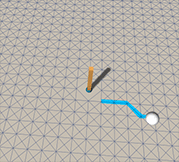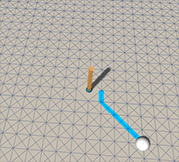Class XPath Extends ABPath
Extended Path.
This is the same as a standard path but it is possible to customize when the target should be considered reached. Can be used to for example signal a path as complete when it is within a specific distance from the target.
Note
More customizations does make it slower to calculate than an ABPath but not by very much.
A* Pro Feature:
This is an A* Pathfinding Project Pro feature only. This function/class/variable might not exist in the Free version of the A* Pathfinding Project or the functionality might be limited.
The Pro version can be bought here
Deprecated
Use an ABPath with the ABPath.endingCondition field instead.
Public Static Methods
Inherited Public Members
Blocks until this path has been calculated and returned.
Returns if the node can be traversed.
Returns if the path can traverse a link between from and to and if to can be traversed itself.
Increase the reference count on this path by 1 (for pooling).
Current state of the path.
Construct a path with a start and end point.
Aborts the path because of an error.
Creates a fake path.
True for paths that want to search all nodes and not jump over nodes as optimizations.
Returns penalty for the given tag.
Total Length of the path.
Returns the cost of traversing the given node.
True if this path is done calculating.
Opens a connection between two nodes during the A* search.
Burst-compiled internal implementation of OpenCandidateConnection.
Open a connection to the temporary end node if necessary.
Returns the state of the path in the pathfinding pipeline.
Reduces the reference count on the path by 1 (pooling).
Copies the given settings into this path object.
Waits until this path has been calculated and returned.
Calculate partial path if the target node cannot be reached.
Callback to call when the path is complete.
Total cost of this path as used by the pathfinding algorithm.
How long it took to calculate this path in milliseconds.
Which graph tags are traversable.
End node of the path.
End point of the path.
Optional ending condition for the path.
If the path failed, this is true.
Additional info on why a path failed.
Determines which heuristic to use.
Scale of the heuristic values.
Immediate callback to call when the path is complete.
Constraint for how to search for nodes.
End Point exactly as in the path request.
Start Point exactly as in the path request.
ID of this path.
Number of nodes this path has searched.
Start node of the path.
Start point of the path.
Penalties for each tag.
Provides additional traversal information to a path request.
Holds the (possibly post-processed) path as a Vector3 list.
Private/Protected Members
Calculates the path until completed or until the time has passed targetTick.
Always called after the path has been calculated.
Returns a debug string for this path.
Writes text shared for all overrides of DebugString to the string builder.
Writes text shared for all overrides of DebugString to the string builder.
Applies a special case for grid nodes.
Called when the path enters the pool.
Prepares the path.
Prepares low level path variables for calculation.
Reset all values to their default values.
Calls callback to return the calculated path.
Traces the calculated path from the end node to the start.
Sets the start and end points.
List of zeroes to use as default tag penalties.
Target to use for H score calculation.
True if the Reset function has been called.
Determines if a search for an end node should be done.
Target to use for H score calculations.
The tag penalties that are actually used.
Internal linked list implementation.
Current best target for the partial path.
Data for the thread calculating this path.

